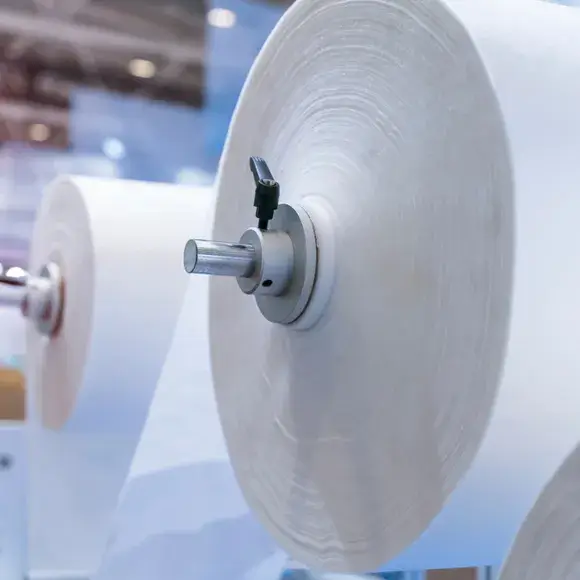Nonwoven fabric, a versatile and innovative material, has been making waves in various industries, from healthcare to automotive, construction, and beyond. In this article, we will explore the world of nonwoven fabric, its properties, applications, and the significant role it plays in today’s ever-evolving market.
Understanding Nonwoven Fabric
Nonwoven fabric is a flat, flexible textile-like material made from staple fiber (short) and long fibers bonded together by mechanical, chemical, thermal, or solvent means, but not by weaving or knitting. This unique manufacturing process sets nonwoven fabric apart from traditional woven or knitted fabrics. The result is a material with distinct characteristics that make it suitable for a wide range of applications.
Types of Nonwoven Fabric
Nonwoven fabric comes in various types, each tailored to specific needs and industries:
- Polyester Nonwoven Fabric: Polyester, a synthetic polymer, is a common material used in nonwoven fabric production. Polyester nonwoven fabric offers excellent strength, durability, and resistance to moisture and chemicals. It is widely used in filtration, automotive, and geotextile applications.
- PP (Polypropylene) Nonwoven: Polypropylene nonwoven fabric is known for its lightweight nature, moisture resistance, and cost-effectiveness. It finds extensive use in disposable medical products, hygiene products, and packaging.
- Spunbond Nonwoven Fabric: Spunbond nonwoven fabric is made by extruding molten polymer through a spinneret, which creates continuous filaments. These filaments are then laid onto a conveyor belt and bonded together. Spunbond nonwoven fabrics are commonly used in agriculture, furniture, and industrial applications.
The Nonwovens Institute: A Hub of Innovation
The Nonwovens Institute, located at North Carolina State University, is at the forefront of nonwoven fabric research and innovation. It serves as a hub for collaboration between industry leaders, researchers, and students. The institute’s work extends to a wide range of sectors, from healthcare and filtration to automotive and environmental applications.
Applications of Nonwoven Fabric
The versatility of nonwoven fabric is reflected in its numerous applications across diverse industries:
- Healthcare and Medical Textiles: Nonwoven fabrics are extensively used in the medical field for surgical gowns, masks, drapes, and wound dressings due to their breathable and sterile properties. They are also crucial in the production of disposable hygiene products such as diapers and sanitary napkins.
- Filtration: Nonwoven fabrics play a pivotal role in air and liquid filtration systems. They are used in HVAC filters, automotive cabin air filters, and industrial dust collection bags.
- Automotive Industry: Nonwoven materials are used in car interiors for upholstery, headliners, and carpeting due to their durability and sound absorption properties. They also find applications in automotive filtration systems.
- Construction: In the construction industry, nonwoven fabrics are used for insulation, roofing, and geotextile applications. They provide strength, stability, and protection against environmental factors.
- Agriculture: Nonwoven fabrics are used in agriculture for crop protection, weed control, and frost prevention. They help improve crop yields and reduce the need for chemical pesticides.
Nonwovens Market Sizing
The nonwovens market has experienced substantial growth in recent years, and its future looks promising. The market size is influenced by several factors, including the growing demand for disposable hygiene products, increasing awareness of environmental sustainability, and advancements in nonwoven technology.
According to industry reports, the global nonwovens market was valued at over $40 billion in 2020 and is expected to continue its upward trajectory. The demand for nonwoven fabrics in the Asia-Pacific region is particularly robust, driven by a thriving healthcare sector, rising consumer disposable income, and a growing automotive industry.
Innovations in Nonwoven Technology
As industries evolve, so does nonwoven technology. Recent innovations in nonwoven fabric manufacturing include:
- Sustainable Materials: The focus on sustainability has led to the development of nonwoven fabrics made from recycled materials and biodegradable polymers, reducing the environmental impact of nonwoven production.
- Nanofiber Technology: Nanofiber-based nonwovens offer enhanced filtration efficiency, making them ideal for applications where fine particle filtration is crucial, such as air purification and medical filtration.
- Smart Textiles: Nonwoven fabrics are being integrated with smart technologies for applications like wearable health monitoring devices and responsive textiles.
Conclusion
Nonwoven fabric, with its diverse range of types and applications, has become an indispensable part of various industries, driving innovation and meeting the evolving needs of consumers and businesses. As technology continues to advance and sustainability becomes a top priority, the nonwovens market is poised for continued growth and exciting developments. Whether it’s in healthcare, filtration, automotive, or construction, nonwoven fabric is truly unleashing innovation across the board.


